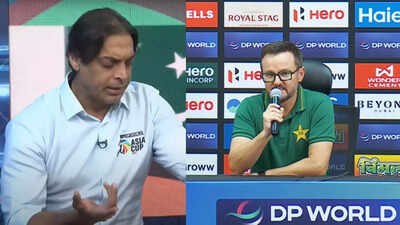When you’ve been around for 60 long years like Doctor Who has, growth and evolution is the name of the game. Not just in new places each week, new heroes and friends and villains along the way, but the show has adapted and built its own riff on genre after genre of storytelling thanks to its remit. But as Doctor Who entered a new era this holiday seasonit did so making its latest change feel a little bit bigger than usual.

Simultaneously a lot and not much at all goes on in “The Church on Ruby Road.” Interestingly, it doesn’t really have a parallel in the trio of anniversary specials we got just a few weeks ago—perhaps the closest is the first, “The Star Beast,” which in and of itself had the slightly less weighty task of introducing yet another new era as it did for the 14th Doctor and Donna Noble’s brief return. It’s a romp in the Russell T. Davies fashion that plays even faster and looser than “Star Beast” did when it comes to having an actual central plot to follow, one that masquerades this weakness under a heaping pile of sentiment and charismatic performances. It’s just that this time around, the sentiment Doctor Who can lean on is not the return of beloved characters and familiar actors, nor the perpetual cycle of “hey, remember when you liked Doctor Who? Well, it’s back!” vibes that the show has pivoted to and from over its long, long life.
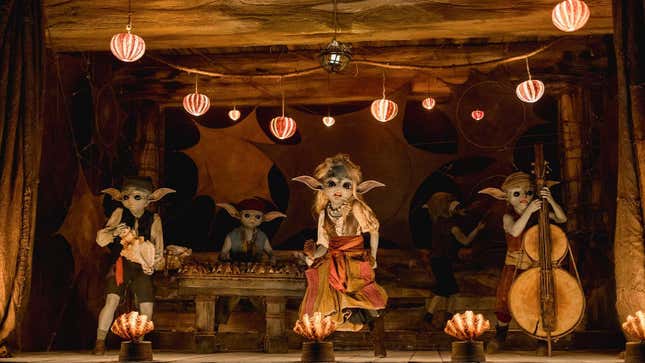
The sentiment it leans on then is… well, it’s literally magic. As much as “Church” tries to underpin a lot of its details on an ostensibly sci-fi frame, it really is Doctor Who at some of its most fantastical in a very long time. Goblins fly a battered sailing ship above the skies of London, but it’s not filled with anti-gravity thrusters and they’re not from an alien world, they’re just… mystical creatures, with little explanation given beyond that. Time travel is played with, of course, but it’s wrapped up more importantly in the idea of coincidence and chance, that time itself is less about navigating a line and more this fragmentary tapestry of different potential threads made of meanwhiles and neverweresto borrow a poetic phrase from Davies’ last tenure on Who.
The Doctor does Doctor-y things—solves puzzles, breaks systems, open doors he shouldn’t—but they’re not computers or deadlock seals or security networks: it’s a language of rope and string, tugging on pulleys like a manner of divination. Things fizzle in and out of their importance to the narrative with little explanation, because the show can hand-wave the surreality of this magical world of bad luck and fae circumstance. It’s funny, that for all the prior (and often valid) criticisms that modern Doctor Who treats the Doctor’s Sonic Screwdriver less as a scientific device and more as a magic wand, here, in a story suffused with magical rhyme and reason, it stands out as the rare piece of explicit science-fictional technology.
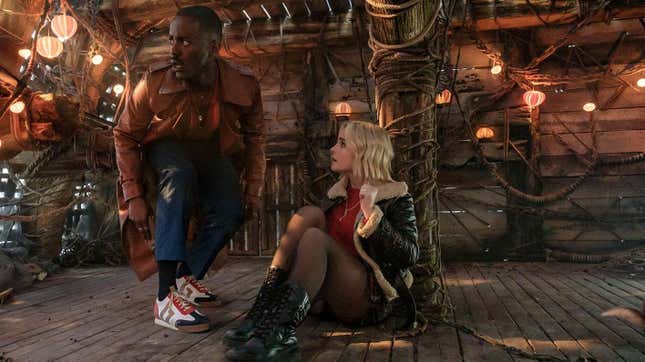
Whether or not this works for you will largely depend on—along with a little poking about the magic of the season and all—just how much Ncuti Gatwa and Millie Gibson can sell this loosey-goosey rambling plot to you as the Doctor and Ruby. It’s excellent news then that they both put their strongest foot forward to do so: if “Church” is light on plot, it is rich on character, and Gatwa and Gibson alike deliver it in spades, presenting us with a new Doctor and a new companion who feel warm and personable, and filled with potential angles and threads of their own to explore. Free from necessarily having to explore post-regenerative trauma with its new Doctor, or having to set up the need for a new companion as some part of a grand plot, “The Church on Ruby Road” just asks you to vibe with its new leads, as much as they vibe with each other.
And for a story built around coincidence and circumstances—the specific alignments of all these tiny moments of happenstance that create our lives—it lends another bit of magic to the proceedings: the 15th Doctor and Ruby Sunday feel like they’re destined to connect. Not through some esoteric dire prophecy made text, like the threat of the the Girl Who Lived with Clara Oswald or the Bad Wolf paradox with Rose Tyler—but instead, fitting for an episode fascinated with magic, that aforementioned vibe. As the two cross paths over and over again while the Doctor senses that vague tapestry of time coalescing around this young woman, you begin to see more and more parallels between the two that just makes them click, beyond Gatwa and Gibson’s electric chemistry.
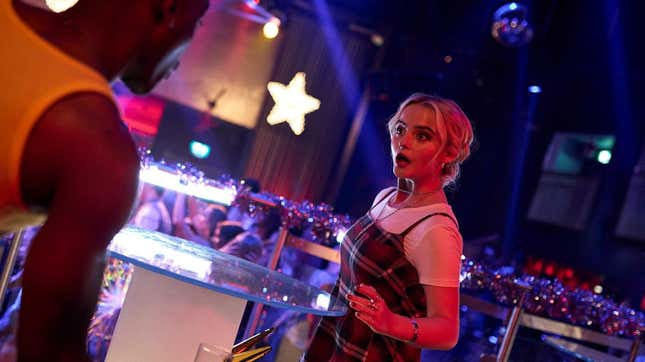
The 15th Doctor’s newfound joy for life is mirrored in Ruby’s own ever-optimistic personality, even as she finds herself cursed with bad luck as the goblins circle around her and the foster child her adoptive mother has taken in, Lulubelle, for Christmas. Their shared background as foundling babies establishes an understanding between them immediately—and adds an interesting emotive layer to Gatwa’s Doctor, building on the 13th Doctor’s status as “The Timeless Child” in an interesting mirror as to how the Doctor faced the survivor’s guilt of the Time War coming into the 2005 relaunch. Also, there’s a shared sense of furious justice when they uncover the goblins and their king’s plan to feast on the temporal potentiality of Lulubelle’s future, and then to spite the Doctor by going back in time to do so with Ruby herself. They’re also just fun together in a way that feels less like a lot of prior Doctor-companion relationships: in fact, it feels like a more youthful take on the Doctor and Donna’s friendship, in another lovely mirroring to what we just got for the 60th anniversary.
So yes, while the plot itself is relatively threadbare—the Doctor and Ruby stop the goblins, the goblins strike back to try and erase Ruby from the present timeline, and get thwarted for good—“Church” rides really high on just watching the connections forge between the Doctor and his new best friend. We as an audience know that Ruby is going to end up stepping into the TARDIS by the end of the episode, because Millie Gibson was announced as the new Doctor Who companion a year ago. But “Church” makes it feel like less of a metatexual inevitability, and more like the emotional climax of all its different ruminations on happenstance and coincidence, like these two people can see the bond developing between themselves in real time, and a desire to explore that further. It’s just another kind of magic it layers on, this sentimental feeling that you really do just want the Doctor and Ruby to have a wonderful time and wonderful adventures together.
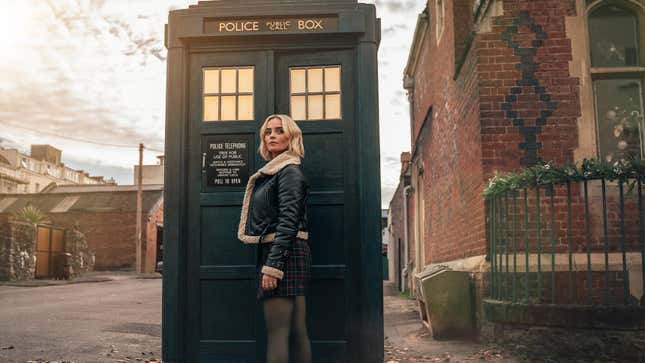
And it’s that promise that “The Church on Ruby Road” leaves us on: the chance to see this spark between the Doctor and Ruby flourish, and see how much fun they can have together. Hopefully their future adventures will bring stories with a bit more meat on the bones to chew on, to match the potential of that connection and charisma that Gatwa and Gibson just ooze together. If it can, the future of Doctor Whofantastical or otherwise, is looking bright indeed.
Want more io9 news? Check out when to expect the latest Marvel, Star Warsand Star Trek releases, what’s next for the DC Universe on film and TVand everything you need to know about the future of Doctor Who.




